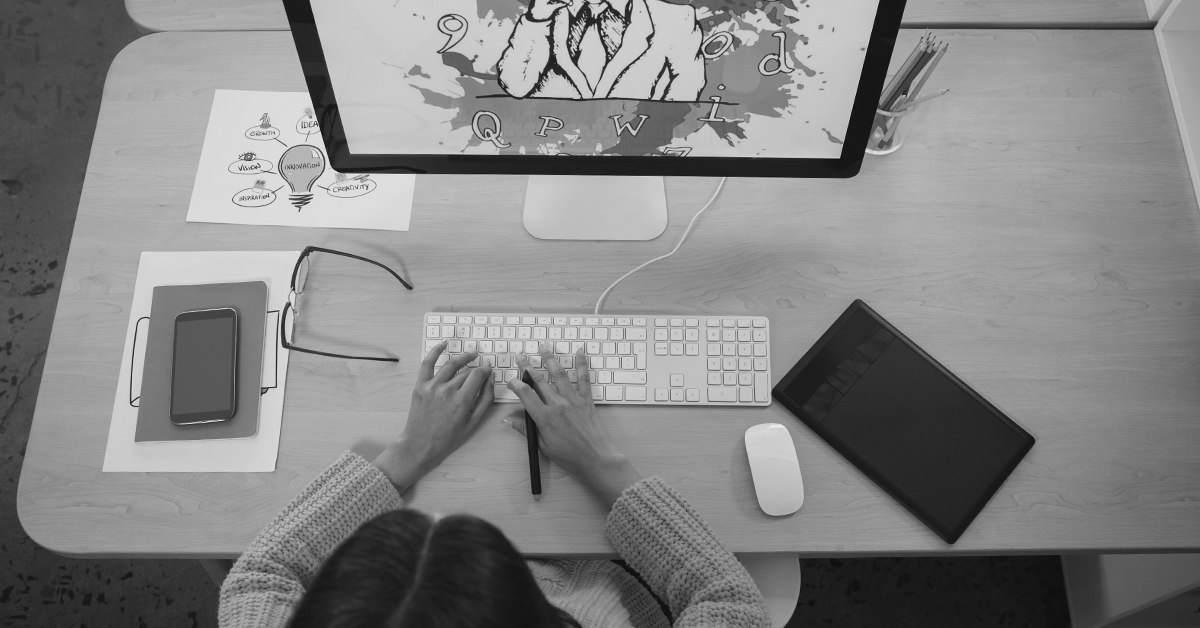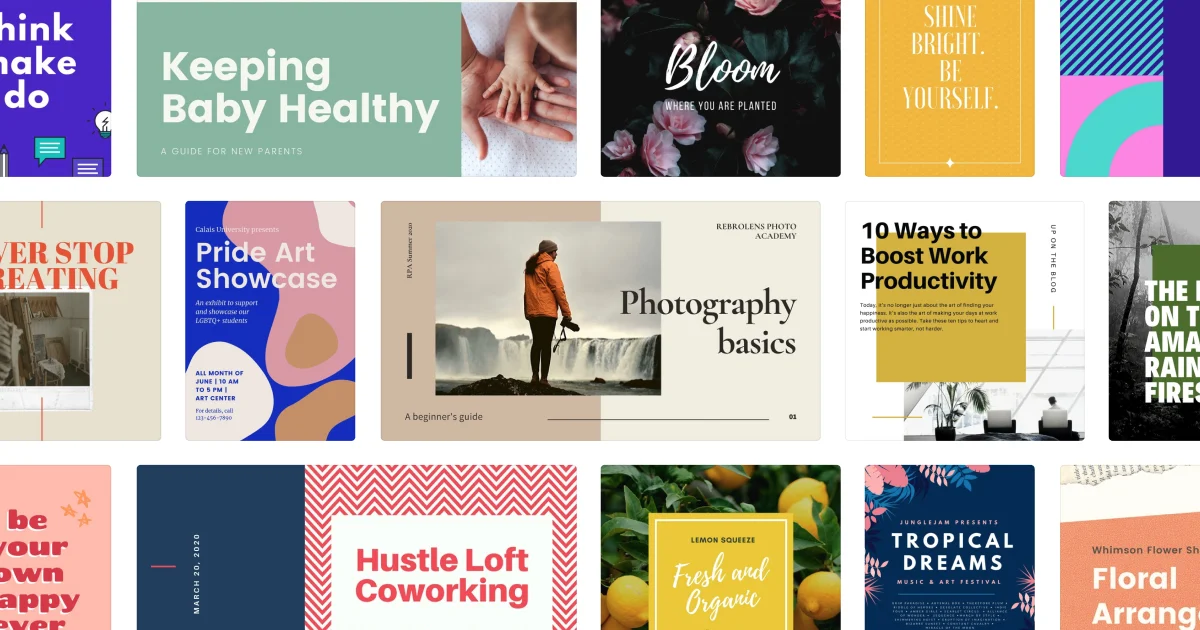
In the fast-paced world of business, first impressions matter more than ever. Your brand’s visual identity, online presence, and marketing materials can make or break your success. While the allure of DIY design tools is undeniable, there are times when the expertise of a professional designer can truly elevate your brand and streamline your success. Competition is fierce, so the expertise of an experienced designer can be the key to setting your business apart from the rest.
This article will guide you through the nuances of when and why you should consider bringing an experienced designer on board. We’ll explore different types of designers, the benefits and limits of DIY tools like Canva, and what projects you’ll get the most value from when investing in professional design.
Benefits of hiring a designer
Saving time to focus on your expertise
As a business owner, your time is your most valuable asset. Investing it in tasks that align with your core expertise can lead to exponential growth. By entrusting a professional designer with your visual needs, you free up time to concentrate on what you excel at. You can learn how to design a social media tile or website yourself, but it’s going to take a lot longer than designers who work with these programs every day, and it won’t be as good. Pick and choose what is the most effective use of your time and energy.
“The first rule of management is delegation. Don’t try and do everything yourself because you can’t.” – Anthea Turner
Unleashing expertise and new ideas
Designers are not just artists, they are strategic thinkers who combine creativity with industry knowledge. Their fresh perspective can breathe life into your ideas and help you stand out in a crowded marketplace. Professional designers understand the psychology behind design and use it strategically to engage and convert.
Bringing your vision to life
Your business likely began with a unique vision. A skilled designer can take that vision and transform it into a cohesive and compelling visual identity that resonates with your target audience.
Consistency across platforms
Inconsistency in visual assets can dilute your brand’s impact. A professional designer ensures that your visual elements remain consistent across various platforms, reinforcing brand recognition and credibility.
Making a professional first impression
In today’s digital world, first impressions often occur online. A professionally designed website, logo, and other visual assets can instil trust and confidence in potential customers from the moment they encounter your brand.
Types of designers: what do they actually do?
Before deciding if you need a professional designer, it’s a good idea to understand what they can do. Many designers are multi-faceted and have a wide range of skills. Studios and agencies will have a creative team with a range of skill sets, while some freelancers will be very niche.
Brand designer: crafting your visual identity
A brand designer is your brand’s storyteller. They create the visual elements that define your business: logos, colour schemes, typography, and overall aesthetic. These elements encapsulate your brand’s personality, values, and mission and make a lasting impression on customers.
View this post on Instagram
Print designer: tangible impressions
Print designers excel in creating tangible materials – brochures, business cards, flyers, packaging and signage. While digital mediums often dominate, the tactile nature of print is still impactful. A skilful print designer ensures your physical materials convey professionalism and align with your digital presence, creating a seamless brand experience.
Digital designer: navigating the online realm
Digital designers specialise in crafting digital assets, from web banners and social media graphics to email templates. In the age of digital marketing, their expertise ensures that your online touchpoints are visually engaging, responsive, and optimised for user experience.
View this post on Instagram
Motion graphic designer: adding dynamic flair
Motion graphic designers bring your content to life with animations, video content and dynamic website elements. In a world where attention spans are shrinking, incorporating motion graphics can captivate your audience and deliver messages succinctly. Custom animations will make sure your brand stands out from the crowd.
View this post on Instagram
UX/UI designer: enhancing user experience
UX/UI designers are the masterminds behind digital products like websites and apps. They focus on optimising the user journey, ensuring your website or app is intuitive, user-friendly, and visually appealing. A well-designed user experience can lead to increased customer satisfaction and conversions.
View this post on Instagram
Finished artists: polishing design precision
Finished artists meticulously review and finalise designs, making sure they adhere to technical specifications and adjusting colours, typography, and layouts where needed. Whether it’s print materials or digital assets, finished artists bring their expertise to ensure that every element is fine-tuned and ready for production.
Publication/layout designers: perfecting visual presentation
Publication/layout designers are experts in creating cohesive and visually appealing publications such as magazines, books and brochures. They organise the layout of content, ensuring that typography, images, and graphical elements work together to deliver a seamless reading experience. A skilled publication designer understands the balance between aesthetics and readability, making sure your printed or digital publications are not only informative but also visually engaging.
View this post on Instagram
Best DIY tools and when to use them
Canva has made creating basic graphics more accessible than ever. It has a fantastic library of templates with pre-set dimensions and settings. This helps create a variety of content and collateral quickly and easily without having to know many technicalities of design, web and print. Plus, they have new features being added all the time.
Canva is best for creating content like social media stories as they are temporary and free to post, so it may not be worth hiring a designer. Compared to printed signage which is expensive and permanent, DIY is not the best solution. We believe the real value in Canva lies in creating and using branded templates that can speed up your workflow (saving you time!), especially for ongoing content like social media posts. However, using the pre-designed templates can prove difficult if you don’t have the skills to customise them to match your branding – and you need to have good branding in the first place. It also lacks the depth and personal touch that comes with professional design as it is not customised to your brand.
To use Canva effectively, you need to put in the groundwork and learn to use it properly. Even then, it may be worth hiring a designer to set up your brand kit and templates for you to get you started.

Image source: Canva
Out-of-the-box websites
There are many website builders these days, such as Shopify, WIX, SquareSpace, etc., where you can basically choose a template and go. These sites have a user-friendly dashboard and often a drag-and-drop interface. They have many features that can make hosting a website and running a webstore simple for small business owners – particularly for e-commerce stores. These are great if you don’t need a custom design, as the customisation options can be very limited. However, some of the templates can still be very creative, and if you have good branding, you can certainly select a template that has a similar look and feel.
Again, just be prepared to spend the time to learn and use the dashboard. Even user-friendly interfaces still require a lot of time and customisation so that your site looks like yours and not just a standard web template.
Investing in professional design: what’s worth spending money on?
Brand identity: your visual signature
Your brand identity isn’t just a logo; it’s the visual embodiment of your business. Investing in a professional brand designer ensures your identity is authentic, memorable, and scalable. Your brand identity will include guides around colours, fonts, graphic elements and image style, which will be the foundation upon which all other design efforts are built.
When your business demands a unique, cohesive visual identity that resonates with your target audience, an experienced designer is indispensable. They create tailored solutions that reflect your brand’s essence, setting you apart from cookie-cutter designs.
View this post on Instagram
View this post on Instagram
Packaging:
If your business involves physical products, packaging design is non-negotiable. It’s the first tactile interaction customers have with your product, and the shelf appeal can heavily influence purchasing decisions. The packaging needs to capture attention, stand out from competitors and entice the customer to purchase your product. You will need someone who not only understands your brand and target market, but also the technical side of the printing processes, materials, colours, die cuts and print finishes.
Printing:
As mentioned above, due to the cost often associated with printing and the permanence of tangible prints – there really is no room for error! It is always worth having a professional at least review your work – check your colours, that text is outlined and add necessary trim and bleeds.
Your digital storefront:
In the digital age, your website, app or social media page is often the first interaction potential customers have with your brand. Where is your most important digital touchpoint? That is where you will get the most value from hiring a designer. Investing in top-notch digital design ensures a seamless and captivating online experience and establishes credibility.
View this post on Instagram
View this post on Instagram
Video content:
Video content has become a cornerstone of modern marketing. Whether it’s for YouTube, TikTok, or other platforms, a motion graphic designer can help you create eye-catching videos, animations and motion graphics that captivate your audience. On image-heavy platforms, movement helps your content stand out amongst the static content as it is engaging and attention-grabbing, and on video-heavy platforms, quality content will set your brand apart. From full-length how-it-works animations to logo reveals – the possibilities are endless. Motion design also has one of the steepest learning curves and can require expensive software and equipment.
View this post on Instagram
Paid ads:
If you are putting the money into advertising, you want to make sure the ads are going to convert! For Meta social media ads, there are certain rules that need to be followed, such as only 20% of the ad can be occupied by text. Hiring a professional designer will make sure your ads follow the latest guidelines and are visually compelling. Designers understand the psychology of attention and how to communicate with your target audience. Be it a heavy investment in print advertising or web ads – an experienced designer will help you capture the attention of your target audience.
Conclusion: elevate your brand with expertise
In a world overflowing with content and competition, design can be your differentiator. An experienced designer isn’t just a service provider; they’re a partner invested in your success. They understand that design isn’t just about aesthetics; it’s about conveying your message effectively, evoking emotions, and building trust.
Design isn’t a cost. It’s an investment that pays dividends in customer loyalty, engagement, and business growth. Remember, in a sea of options, a well-crafted design can be the anchor that keeps your business steady and thriving.
Your brand’s journey is unique, shouldn’t your design be too? Embrace the expertise of an experienced designer and watch your vision come to life in ways you never thought possible. Get in touch with Oraco today.
